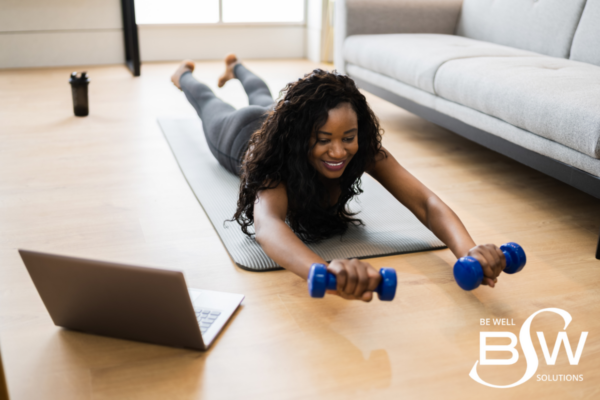If there was one thing that the pandemic highlighted, it was health and the importance of taking care of our bodies to the best of our ability. Many schedules and routines have completely shifted in the post-pandemic era. As we step back into a workout routine or start one for the first time, we might wonder what has changed over the last few years and how to make those changes advantageous.
More Reasons to Exercise
According to U.S. News, the top three reported reasons to exercise before the pandemic were to control weight, feel good, and live a long and healthy life. Post-pandemic, the top three stated reasons changed to reduce stress, feel better mentally, and look better physically (U.S. News1). The Mindbody organization conducted a post-pandemic survey and found that 78% of Americans say “wellness is more important than ever.” Furthermore, 77% of Americans agree that physical activity benefits mental health (Mindbody2). The benefits of exercise haven’t changed, but more people are finding value in the connection between physical and mental health and regular physical activity.
The Rise of Home Workouts
During the pandemic, home workouts rose exponentially in popularity. Whether using home equipment, following an app, or participating in a virtual class, many options are now available at our fingertips. In the post-pandemic era, these home workouts are here to stay. Many people found that while they aren’t the only option, they offered flexibility, comfort, and efficiency that driving to a gym or studio didn’t have. Exercisers have also found hybrid options that allow in-person and at-home workouts to help accommodate ever-changing schedules and lifestyles.
Increased Variance in Exercise Habits
Increasing options for exercise has brought a variance in adhering to exercise consistently. Hybrid and remote work, returning to more travel, and financial obligations keep schedules varied, making it harder to pick up old routines or build new ones. While this can be an added challenge, it highlights how helpful it is to plan for and schedule exercise into your day. Think about building a new routine that fits your current needs and schedule. Use the vast exercise options to your advantage and choose types that will suit your needs for the current day or week. Add variety to your routine to avoid getting bored or hitting frustrating plateaus.
Some Things Stay the Same
The benefits of regular physical activity are numerous, and that remains unchanged. It is proven to help with many areas of health, from better sleep and heart health to improved weight and stress management. The Physical Activity Guidelines for Americans3 also remain unchanged and recommend at least 150 accumulated minutes of moderate-intensity aerobic exercise along with at least two days of strength training activities each week. Always start slow when beginning exercise and gradually increase your duration and intensity. Be realistic with your goals, listen to your body, and adjust your approach whenever necessary.
Always consult with your physician before starting a new exercise program.
Continue Reading May 2024 Newsletter: 5 Ways to Take Charge of Your Health During Women’s Health Month

